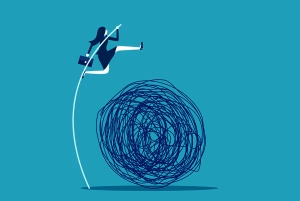
What are submodalities?
The definition is they are subsets of the Modalities (Visual , Auditory , Kinaesthetic, Olfactory, and Gustatory) that are part of each representational system.
Why would you want to learn about submodalities?
With submodalities, we can make really fast changes to people’s behaviour. So changing habits or changing how people feel about situations in their lives are all really simple and positive changes which are possible.
So for example, working with people’s limiting beliefs, beliefs that disempower them some way, such as “I’m not good enough” or ”I don’t believe in myself.”
Submodalities offer a technique that can remove limiting beliefs and install new positive and empowering beliefs in about 12 minutes.
Submodalities are windows into the mind and how it operates and understanding them, and knowing how to work with them makes amazing changes possible.
What are submodalities?
As I mentioned above submodalities are subsets of our representational systems (To find out more more about representational systems you can read our article primary representational systems.)
Submodalities are the way we encode and give meaning to our internal representations.
So what are internal representations? Well, they are the way we store information after it has come into our awareness.
To re-cap the NLP communication model. An external event comes into our neurology (your mind) and is filtered by a bunch of filters that distort/delete and generalise that event and out of the filtration process comes an internal representation. According to the meaning of this internal representation that drove the emotional state and dependent on the emotional state that drove the physiology and out of the internal representation, the state and the physiology comes the behaviour.
Submodalities.
So what are they?
They are the fine details of each modality.
So let’s take the visual modality as an example.
If we were to describe the visual aspects of something we could talk about if it was in black and white or in colour. We could say if it was super bright or so dim we can hardly see it. Is it in focus or not, etc…
Try this as an experiment. Choose your favourite photo or picture and put it in front of you. Now describe all the things about what you can see regarding the visual aspects. Remember, we’re not talking about the content of the picture (if there are people or clouds for example) but rather about the visual aspects of that image.
These are the submodalities.
Here’s a list for each modality…
| Visual | Auditory | Kinaesthetic |
|---|---|---|
 |  |  |
Now you might have noticed a couple of things about this list.
Firstly it’s only got visual, auditory and kinaesthetic on it.
And secondly the submodilities themselves.Why are just these listed when there are more?
This leads us on to how we can use submodalities to make changes.
How can we use submodalities?
Remember I said that submodalities are how our internal representations are encoded?
For each memory we have it will have a unique set of submodalites, the combination of which gets used internally to represent that memory. The submodalities are the part we can access of that very highly complex internal representation.
So if we change the submodalities, we change the internal representation, which in turn changes the meaning, which will in turn change the behaviour.
So back to out list, why only visual, auditory and kinaesthetic?
Well, because they are the primary drivers, or main submodality sets. There will be sets for gustatory (taste) and olfactory (smell) but they don’t play such an influential role. By working with the ones listed above we can make the changes we are looking to make,
And again wih the list, why are just these submodalities listed?
For a similar reason to only visual, auditory and kinaesthetic being there. The submodalities listed are the ones that, if we work with them, will make the changes we want to see.
What submodality techniques can we use?
There are a number of techniques that we can use to make positive changes with people we are working with.
Here are a few….
– Contrastive analysis. (Not a technique in itself, it is part of another one)
We are comparing 2 sets of Submodalities and noticing the differences.
The second part is mapping across
– Mapping across
In order to do mapping across contrastive analysis must have been performed first so we know the differences.
Mapping across is then changing the Submodalities of the target internal representations from the source internal representations where they are different. This changes the meaning and therefore the behaviour.
– Swish patterns
Allow you to change a minor state or behaviour that happens in a specific context.
Allows you to look at a situation / event from different viewpoints or perspectives.
– Dissociative technique (Fast phobia model)
Allows you to remove the negative kinesthetics (feelings) on a negative event / trauma or behavior
Summary
Submodalities allow us to make very fast changes to our own behavior or even help others to do the same thing
They can be used in a multitude of different situations.
For example Someone who doesn’t like using the telephone. You could change the behavior towards the phone (or rather help them change it) so they could then LOVE it!
How about someone who doesn’t like interviews… You could help them change the meaning of their internal representation so that they could love interviews.
What about in fitness? You could be, or someone could be, starting a new fitness program, but you, or someone, doesn’t like exercising. You could use submodalities to change the way they behave towards exercise and fitness and change it to liking them.
What about things we procrastinate about, such as doing paperwork like a tax return? If you don’t like them much you could change that dislike to a like.
We can use submodality work for other activities such as presentations, selling, performing in front of people or even simple tasks in your day to day life.
If there is anything you don’t like you could change it to liking that activity or task
There are a multitude of ways of working with SMDs to make positive changes, the only limit is your imagination!
Would you like to know more?
Our blog page has many more articles for you to read.
Alternatively, head over to our NLP glossary where you can find a list of NLP terms with lots of links to articles.
If you'd like to find out more about our courses where you can learn more head over to our courses page.
Thanks for reading!
Chris
ABNLP Trainer
Founder: Insights NLP
Phone +62 (0) 812 3895 2053













